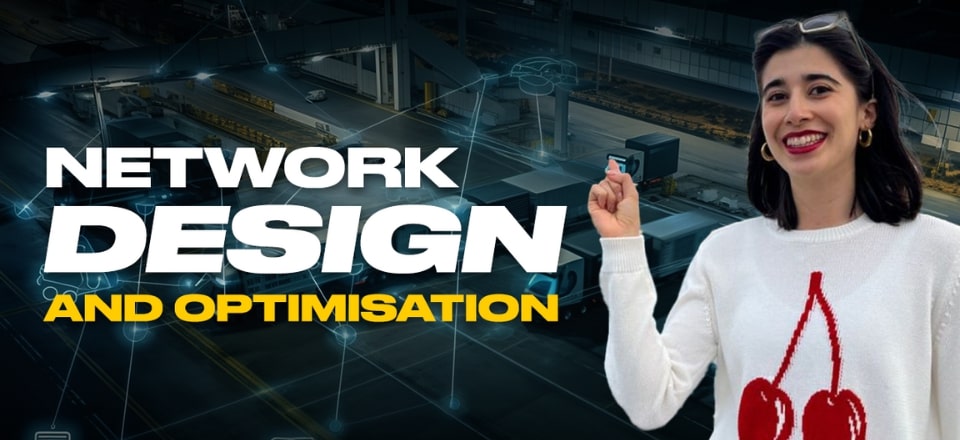Unlocking the secrets to optimizing your network design is pivotal for a thriving supply chain.
Many organizations face challenges due to inefficient network setups, leading to unnecessary costs and delays.
Dive into this video where Sofia Rivas Herrera shares her expertise on network design and optimization to transform your supply chain operations.
Distribution network design is a crucial yet often overlooked component. Sofia Rivas Herrera, an expert from HP’s global supply chain team, excels at converting physical challenges into mathematical models, which is fundamental to effective network design.
What is distribution network design all about?
Sofia makes it easy to understand: imagine a map that includes your manufacturing centers, distribution hubs, and customers. Each point, or node, on this map is part of your supply chain, connected by lines representing the flow of goods. The aim is to optimize these connections to achieve goals like reducing costs or cutting CO2 emissions. Sofia compares this to using a blender, mixing various elements to find the best combination. She stresses that the success of any tool depends on the quality of data it processes. Mistakes often arise when real-world issues are not accurately translated into mathematical models, underscoring the need for skilled professionals in distribution network design.
Blending Theory with Practicality
A solid grasp of theoretical principles allows professionals to predict expected outcomes, which is vital for verifying tool-generated results. Practical experience complements this, enabling adjustments to theoretical models based on real-world constraints. A frequent error is choosing a tool without fully understanding the problem, akin to buying a hammer without knowing what needs fixing. Whether it’s an ERP system, a WMS, or a TMS, starting with a clear objective and then selecting the right tool for distribution network design is essential.
Why Network Design Captivates Sofia
Sofia is passionate about distribution network design because of its real-world applications and problem-solving potential. Creating and testing scenarios to find optimal solutions offers a sense of scientific discovery. Looking ahead, Sofia predicts that distribution network design will be integral to achieving sustainability goals. As companies aim to lower their carbon footprints, supply chain optimization becomes crucial. Although AI can accelerate this process, Sofia warns against relying on it without a strong theoretical foundation.
Reflecting on the practical side of distribution network design reveals its power to uncover innovative solutions. Accurate data input is paramount—garbage in, garbage out, as Sofia aptly puts it. She also foresees the growing importance of distribution network design, driven by sustainability initiatives and advancements in AI. As businesses navigate complex supply chains, the ability to design and optimize these networks will be increasingly vital.
Related articles on this topic have appeared throughout our website, check them out:
- 6 Critical Success Factors in Distribution Network Design
- Do You Know the Signs of Poor Distribution Network Design?
- 10 Reasons to Review Your Distribution Network Design
- The Long and Short of Designing a Distribution Network
- 7 “Costequences” of Distribution Network Misalignment
Editor’s Note: The content of this post was originally published on Logistics Bureau’s website dated April 17, 2024, under the title “Network Design and Optimisation – A User Perspective“


